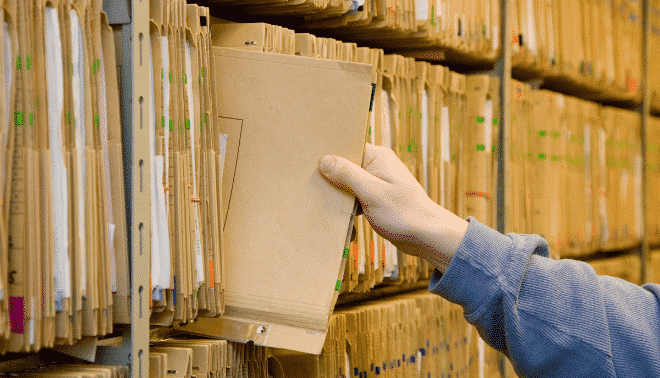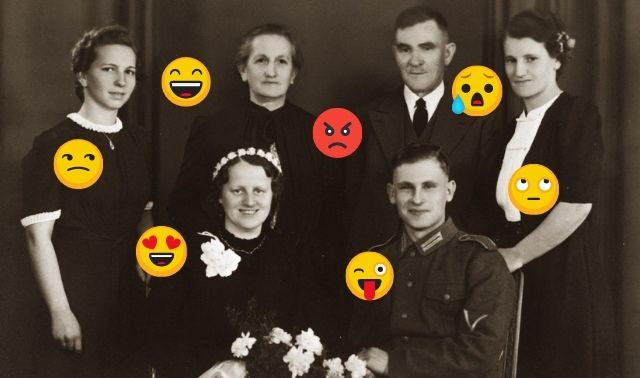Sign up for the Family Tree Newsletter! Plus, you’ll receive our 10 Essential Genealogy Research Forms PDF as a special thank you.
Get Your Free Genealogy Forms
"*" indicates required fields
Genealogy researchers uncover many facts about their ancestors. But they may still wonder what a particular ancestor looked like. Perhaps the burning question on a researcher’s mind is, “Do I look like my ancestors?” In either case, the question that follows is “Is it possible to find a photograph of my ancestors—even when I’m not sure they exist?” You may not currently have older family photographs, but they may still have been created and survive somewhere today.
They may be in the possession of more-distant relatives, rather than your direct family line. That’s why it’s always worth your time to ask relatives (both close and distant) if they have any photos they’d be willing to share. And take it one step further: Ask if the relatives know who else in the family you should talk to about photos. Even if your contact isn’t the designated family archivist, they might know someone who is.
But what should you do if you strike out with relatives, even with collateral family lines? What follows are 12 often-overlooked sources to consult when your family and home sources come up empty.
1. Family Bibles and Books
Like us, our ancestors had books that held a special meaning for the family. In fact, family Bibles may have been the default repository for their family history information. Check among book pages for photos and other family ephemera tucked in a book’s pages. (And make sure to preserve any photos or documents you find in a more suitable place!)
2. Baby and Wedding Albums
It’s no surprise that families curated photos into albums. But those surrounding two specific events—a child’s birth and a couple’s wedding—are among the most common and enduring. Family celebrations like these often bring together family members (even very distant ones) who might otherwise not see each other often, so be sure to ask around about these items in particular.
3. Vertical Files at Libraries and Archives
We usually associate libraries and archives with books and genealogical records, respectively. But they often also hold other resources (some of them unindexed or not listed in archives) that are valuable to genealogy research. Examples include donations from other researchers, newspaper clippings, cemetery transcriptions—and local family photos. Visit the institution in person to see where such materials are held, or contact staff to have a search performed remotely.
4. County Histories
Many counties have written accounts of their history and citizens, often including photos of the relevant people and communities submitted by longtime residents of the county or their descendants. Local historical societies are often involved, and state or local libraries likely have copies of printed histories. You can also search for published county and regional histories at libraries worldwide using WorldCat.
5. Passport Applications
Like us, our ancestors traveled both for vacation and to start a new life in another country. Depending on the destination, they may have been required to hold a passport. Applications for these (found on major genealogy sites) contain a written description of the applicant, plus—in a rarity for records—a photograph. The photograph may not be of the best quality, but the written description can fill in any gaps using details on the individual’s hair color, eye color and stature.
6. Family Friends
Your ancestors were not isolated—they interacted with friends and their communities. So as cameras became more affordable for the general population in the early 20th century, more and more people were able to take and share photos not just with family, but also friends. Check with the descendants of your ancestor’s friends to see if they have photos of your ancestor. You may just find wonderful candid shots, like the one at left of my great-grandmother and her friend Nannie Lee Farson that was held by one of Nannie’s descendants.
7. Church Histories and Directories
Churches and faith organizations periodically published their own histories, as well as member directories. Included in histories are photographs of early members and church leaders, as well as children’s programs, women’s groups and musical groups. Directories go into even more detail, with yearbook-like photos and profiles of church families or individual members. Ask a church about its archives (if it still exists), or investigate local libraries or regional/diocese archives if the church no longer operates.
8. Employers, Clubs and Societies
Secular organizations, too, created directories of its members. Look for evidence that your ancestor was a member of a club or society (such as a fraternal organization), and see what you can learn about what record or directories were created. Start your search at local libraries and any extant incarnations of your ancestor’s organization.
Depending on what your ancestor did for a living, they may also be in industry directories. For example: Was your ancestor an actress? Check out the Motion Picture Studio Directories, available at Ancestry.com. In a similar way, navy cruise books commemorated a crew’s deployment and included portraits of individual sailors as well as group photos.
9. History Museums
These organizations are charged with curating artifacts that document the community’s history and educate the public. Many of their collections include photos of the community and its citizens, so watch for exhibits that cover your ancestor’s time in history, occupation, or causes (such as women’s suffrage). View the exhibit as it goes on display, but also reach out to its curators to see if they have additional information or photographs that weren’t on display. They might also know of other resources you can consult.
10. Local Newspapers
You’re likely already using historical newspapers to keep tabs on your ancestor’s community and find notices such as obituaries and wedding announcements. But don’t forget to look for photos, too, particularly in small community papers. Not all of these highly localized titles have been digitized, and they’re more likely to contain photos of and news about residents and local civic groups. Ask local librarians about what contemporary newspapers are still only available on microfilm or in print.
11. Tombstones
Yes, some tombstones include photos! Though rare, tombstone photos can offer a glimpse into your ancestor’s past. Users at Find a Grave and BillionGraves have photographed millions of tombstones, but you’ll want to see any gravestones (including the photos on them) in person if you can.
12. Commemorative Civic Books
Towns and small cities often celebrate milestones, such as a bicentennial. Towns may have created special commemorative books as part of their festivities to celebrate the town’s heritage. In addition to including valuable information about the history of a community, these books may have included photographs of current and past citizens. Check in with local libraries or historical societies.
No Luck? Look for Descriptions
Is it always possible to find a photograph of an ancestor? Unfortunately, no. Your ancestor may have lived in an era that pre-dated the widespread adoption of photography, or may simply have never taken photos. Other factors—such as natural disasters or the ravages of time—may have destroyed records that did exist.
If even the sources mentioned in this article can’t turn up photos, turn your attention to finding physical descriptions. These spell out what your ancestor looked like, serving as a kind of substitute for a visual depiction.
Some records—including naturalization documents and WWI and WWII draft cards—asked for this information. Look for details like hair color, eye color, height, weight and notes about complexion or stature. These, especially military documents, might also note any physical abnormalities or impairments.
Local newspapers, too, might have described a person’s appearance. You might even get lucky and find a wedding announcement that details what a bride or wedding party was wearing.
Institutional records might also include physical descriptions. Long before the proliferation of mugshots, prison records documented inmates’ physical characteristics. These can be quite descriptive and include things like scars, tattoos and even the condition of teeth. For example, William Martin’s admission to New York’s Sing Sing Prison in 1883 describes him as:
“Bald headed. Small scar on back of neck. Good height, smooth round forehead. Deep set eyes. Thin eyebrows. Scars in each eyebrow. Rather large hollow nose. Long face. Thin lips. Large ears. Bunch of hair in each ear. Scars on each leg from wounds received in the army. Ink marks between each thumb & finger.”
You might also ask relatives who knew your ancestor first-hand if they remember what they looked like. Relatives may even be able to tell you about family characteristics such as hair color or facial shape. When listening to oral histories, take note of comments such as “The Carr side of our family was always on the short side” or “You and your cousins get your red hair from your Irish great-grandmother.” While these types of descriptions are generalized (and may need to be backed up by further research, such as DNA), you’ll start to get an overall idea of characteristics within a family.
Don’t be too quick to assume that photos of your ancestor don’t exist. Think outside of the box (both literally and figuratively!), and search for photographs both online and offline.
A version of this article appeared in the March/April 2022 issue of Family Tree Magazine. Last updated: January 2025










